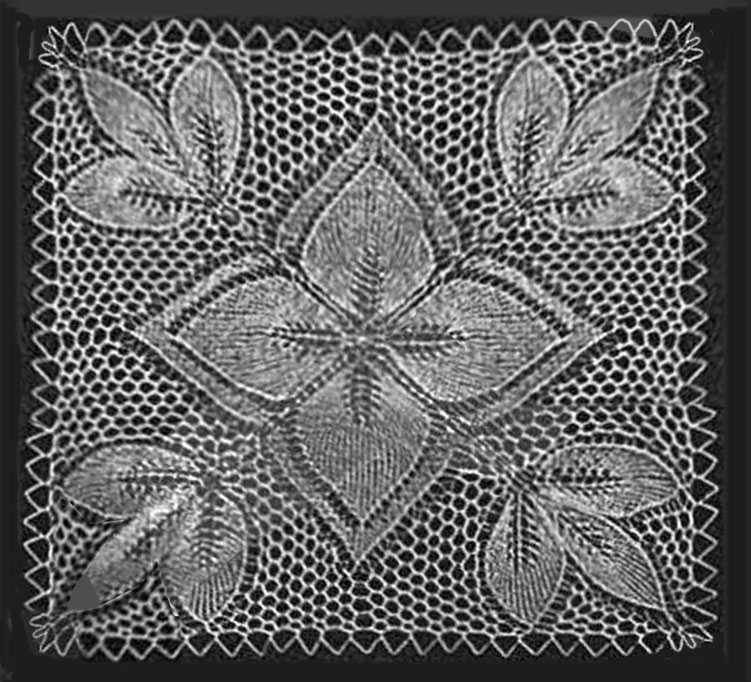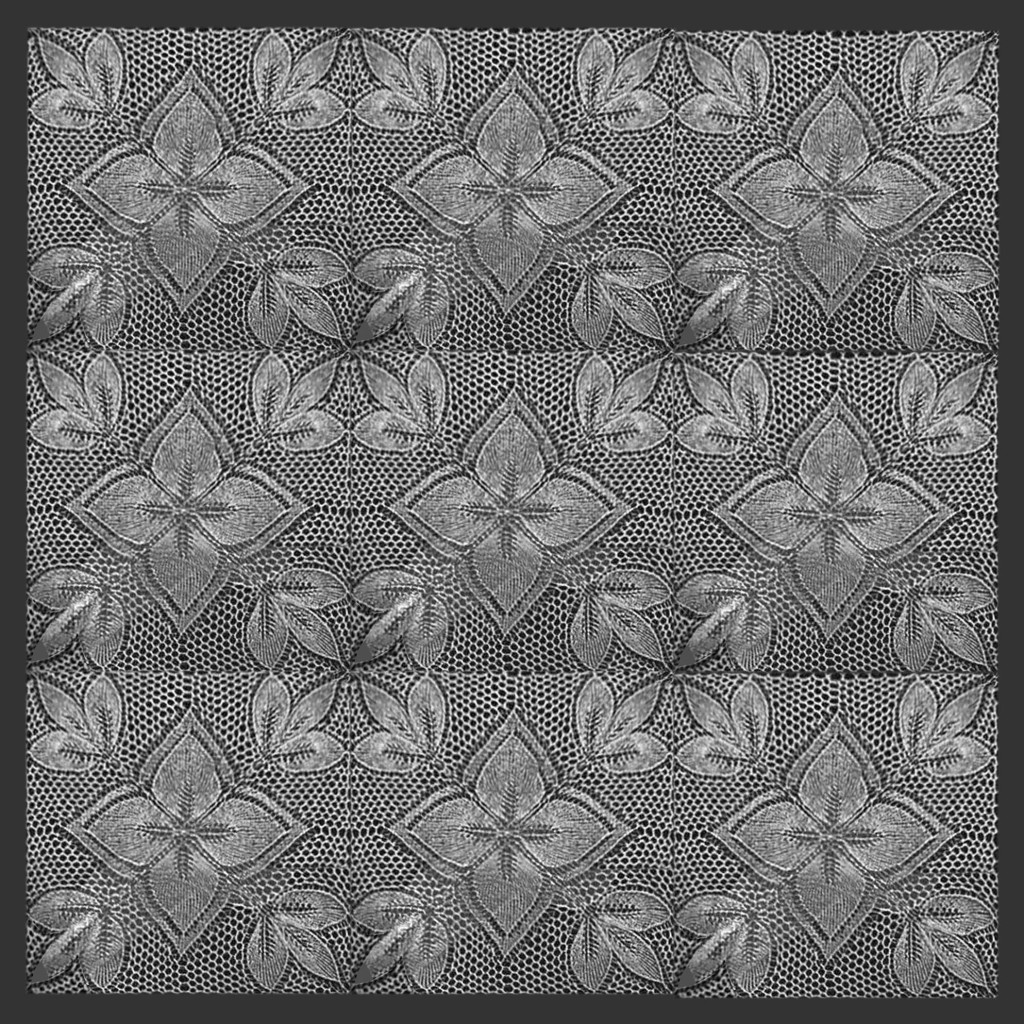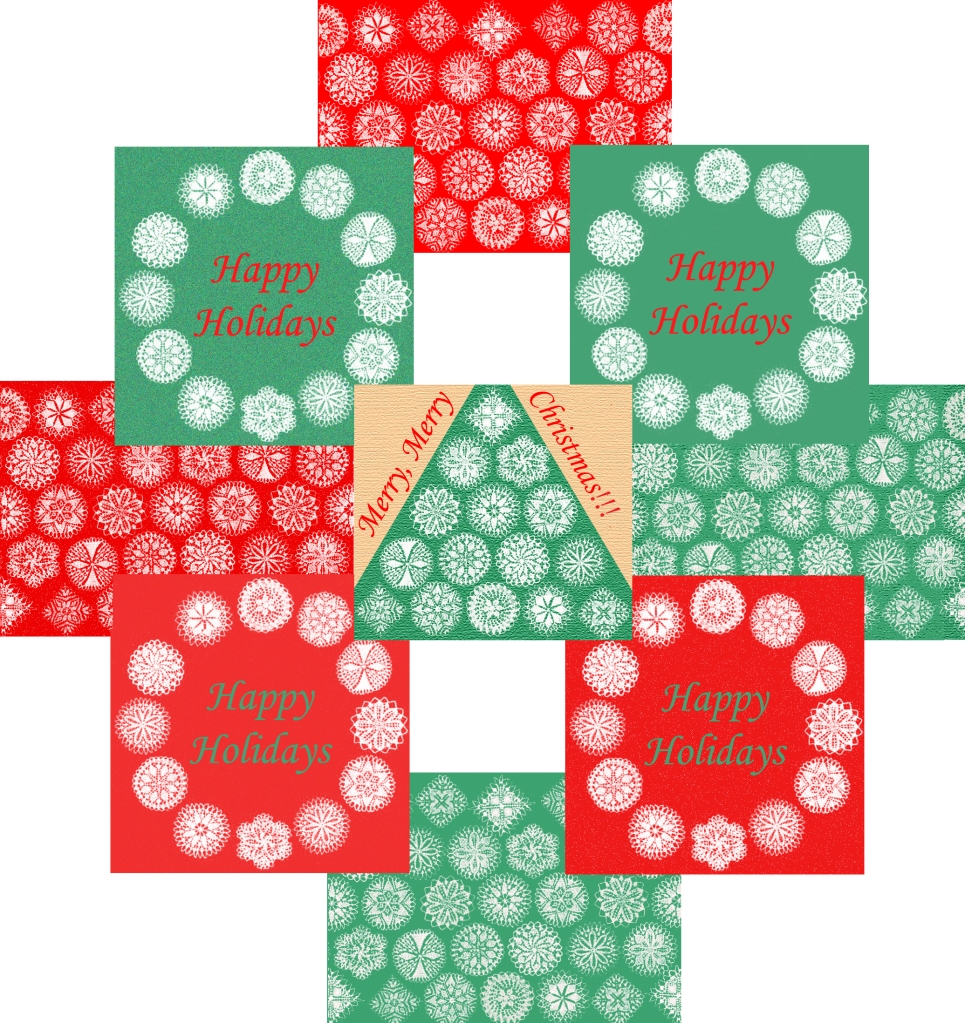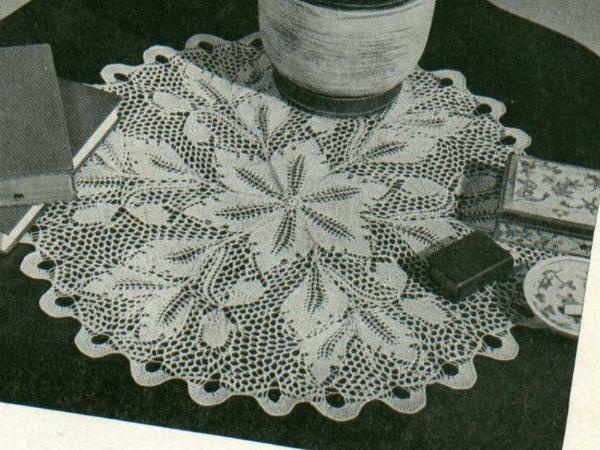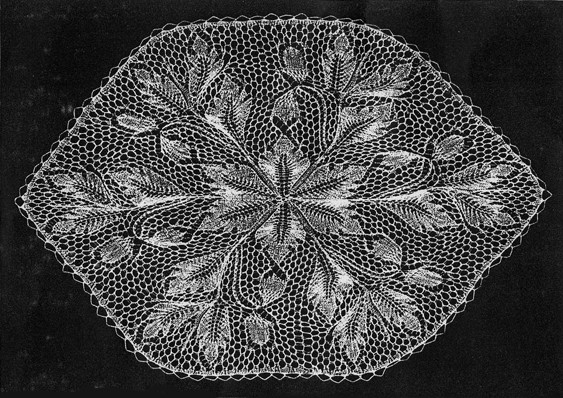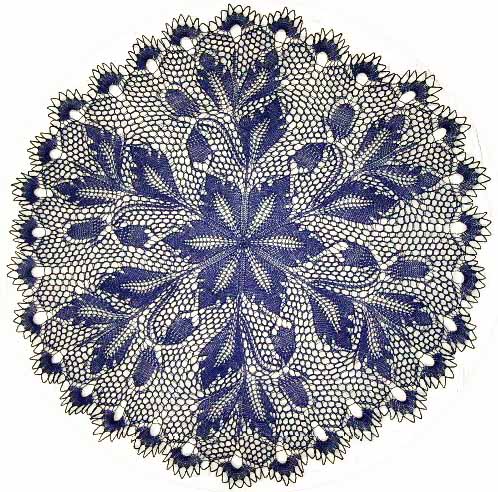You are currently browsing the tag archive for the ‘Herbert Niebling’ tag.
There are so many possibilities for this pattern besides a single motif as a baby blanket or pullover in bulky weight yarn, or multiple motifs in fingering or worsted weight yarn! The above photo of tiled motifs does not show how motifs are to be joined but a three needle bind off method would be easiest. In addition, the motif could be joined without binding off by working a different square motif that is worked from the outside in. Have one pattern in mind but have to locate the original. Feel free to remind me!
For Purchase Info Click Here.
Charted this from written instructions back in 2005! Those instructions contained a frighteningly long float due to having to 30 stitches on Round 74 in order to resume the pattern at the correct point! Have seen the same requirement in other Nieblings that were published by U.S. companies but have absolutely no idea why it was necessary since I found it easy to eliminate. My 2005 version wasn’t published because a person who shall remain unnamed posted their copy on line. But since it is such a lovely “beginner” Niebling and it may no longer be accessible, I decided to embellish my original with pictures of the two other versions (by Verlag G. Meyer, and Verlag fuer die Frau), the Eiche version having only 111 rounds. Also below are pics of Frosted Ferns knitted by Jane Hong and Rochelle Ribeiro.
For purchase info Click Here.
Remember to use the Add To Cart button even if purchasing only one pattern!
Happy Knitting!
The photo below is of my test knit of the pattern. Notice at the border there are two leaves instead of four, which I realized after knitting it! Nevermind that I initially recharted it correctly to contain four leaves! Apparently, upon copying the chart to another sheet in order to compress it to fit on one page and still be readable, I thought I had made a mistake. I hadn’t, and then proceeded to make one… Arrrgh! Turns out the Adaptations 2 and 3 are identical up to Row 77, the differences can be seen by comparing the charts. The good thing about the mistake is that it requires less yarn with the same needle size.
Below is Adaptation 3 worked in sport weight linen on US Size 4 (3.5 mm) needles, measuring 62″ by 31′, same shawl as above first photo.
Below is Adaptation 2:

Below is Adaptation 1.
Note that, in case you already have the Lavori 5-29, it can be worked as a circle by working the stitches between bold lines twice for every repeat instead of every other repeat. However, Lavori 5-29 does not include adaptations for semicircular shawls. For Purchase Info for the Lavori 5-29 Click Here.
For Purchase Info for the Vobachs 401-34 Click Here.
Happy Knitting!
Adelaida (“Adelaide”)

Just now getting around to recharting this one from Labores Beyer – Numero de Jubileo 25.
For purchase info Click Here.
Writing instructions for apparel is way more complicated than for a doily or hat! Hence, my underestimating the time it would take to write the instructions. I actually knitted this pullover twice: the first time, instead of sk2p on the small leaf ground, I worked s2kp which is “slip 2 knitwise, knit 1, pass 2 slipped stitches over”, on Size 3.75 mm needles. Unexpectedly, the resulting dimensions seem to be the same as for the pullover in the above photo which was worked on Size 3.5 mm needles. Apparently, the s2kp yields a tighter fabric!
As for the pullover being almost seamless, the only seam is on the outer edge of the shoulders! A 3-needle bind off with pattern sides facing was used. The pullover is finished with a 3-stitch i-cord where the leftmost stitch of the i-cord is joined to the edge stitch of the garment using ssk (“slip 2 separately knitwise, return stitches to left needle and knit the 2 together through back loops”), but skp could also be used.
The pullover is not difficult to knit. Below is the CONSTRUCTION OVERVIEW for both charted and written formats. After the two bottom center squares are completed, with purl sides facing, the subsequent sections are worked above the upper edges, first on the lefthand side and then on the righthand side. However, note that the “righthand” side becomes the “lefthand” side when the work is turned around so that the second square is facing the knitter!


I may add a photo of the pullover on a full figured gal! It looks more like the photo in the CONSTRUCTION OVERVIEW.
Happy Knitting!



Blocked by tossing in dryer… doesn’t spread out in some places, like lower edge
The pattern is an adaptation of Erikas Handarbeiten 601 – Model E, but squared. The only seams are at the armholes where the slope begins = three needle bind off. The charted part is done (written instructions will be included). Just need to figure out how to block it evenly and then find a human model…
Don’t forget to use the “Add To Cart” button even if only purchasing one item!
Blast From The Past (2007)!
The below pattern is based on the Erikas 601 Model F, but was not putblished because the slip stitch crochet along the front inner edges was too tight such that the two front inner edges below the bust puckered (straightened with pins in the below photo). Also, not shown in the photo are the two buttonholes along the left center edge, though no buttons were ever added. Later I learned to use i-cord for the edges insstead, used on the Lyra Adaption that I actually knitted (here). So will reknit the below pattern (and perhaps the additional adaptations that didn’t have the puckering problem and are shown in one of the first posts of this blog). Stay tuned!

Happy Spring Knitting All!


